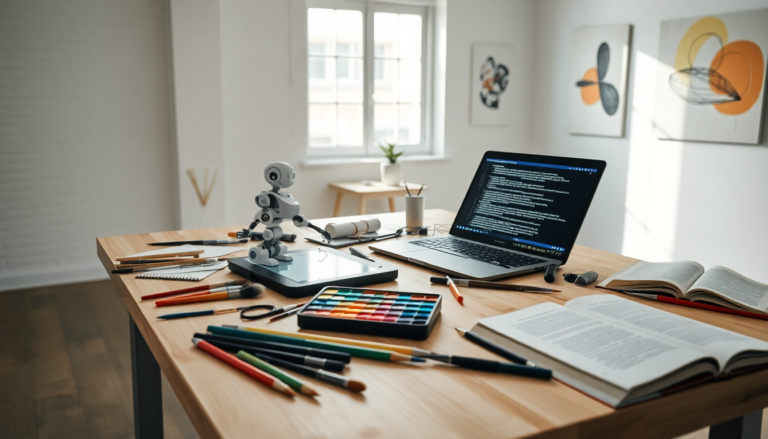Argomenti trattati
In a world where technology and creativity are increasingly intertwined, the impact of artificial intelligence on our creative landscapes sparks both excitement and concern. As AI continues to evolve, its influence stretches across various sectors, including art, literature, and even software development. So, how exactly does AI interact with human creativity, and what ethical implications does this relationship carry? Let’s dive into the fascinating dynamics at play.
The Transformative Power of AI in Creative Fields
There’s no denying that artificial intelligence has revolutionized numerous industries, and the creative sector is no exception. From generating music and stunning artwork to assisting in writing and filmmaking, AI tools are becoming indispensable allies for creators. Take music composition software, for example. Powered by AI, these tools can analyze existing music trends and generate new pieces that resonate with listeners while keeping originality intact. Isn’t it amazing how technology can help create something fresh?
Moreover, AI-driven platforms are enabling artists to explore styles and techniques that may have previously been out of reach. This democratization of creativity allows a wider range of individuals to express themselves artistically, fostering innovation and diversity in creative expressions. However, with this advancement comes a critical question: what about authorship and authenticity? As AI systems produce works that rival human effort, the lines between human and machine-generated art are becoming increasingly blurred.
Ethical Considerations in AI-Generated Content
While the integration of AI into creative processes brings numerous benefits, it also introduces ethical dilemmas that we can’t overlook. One major concern is plagiarism and copyright infringement. As AI learns from vast datasets of existing works, the risk of unintentionally replicating someone else’s creation rises. This reality has ignited discussions about the need for clearer guidelines and regulations to protect intellectual property rights in the age of AI.
Additionally, we must consider the implications for employment within creative industries. As AI tools become more sophisticated, there’s a growing fear that they may replace human jobs, particularly in fields like graphic design, writing, and even music production. While AI can enhance productivity and offer support, finding a balance that allows human creativity to thrive alongside technological advancements is crucial. How do we ensure that technology complements rather than replaces our creative talents?
The Future of Creativity in the Age of AI
Looking ahead, the relationship between AI and creativity is poised to evolve even further. As technology advances, we can anticipate more collaborative efforts between humans and AI, where AI acts as a tool to enhance human creativity rather than supplant it. This partnership could pave the way for groundbreaking innovations and redefine what it means to create in the 21st century. Are we ready to embrace this new era of collaboration?
In conclusion, while integrating AI into creative domains opens up exciting opportunities, we must thoughtfully navigate the accompanying ethical challenges. By fostering an environment that values both human ingenuity and technological advancements, we can ensure that the future of creativity remains vibrant and inclusive. As we continue to explore this new frontier, one thing is clear: the potential for collaboration between AI and human creativity is truly boundless.

